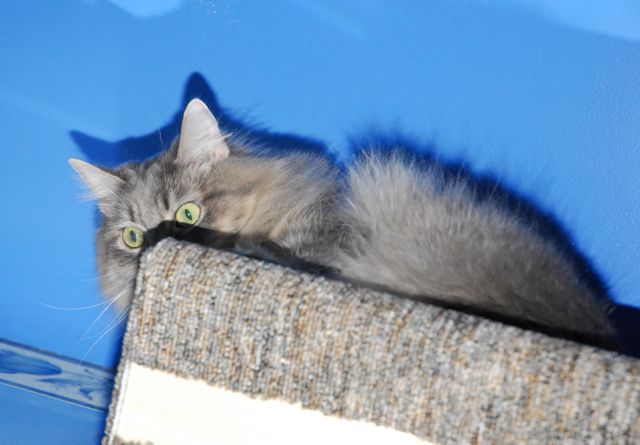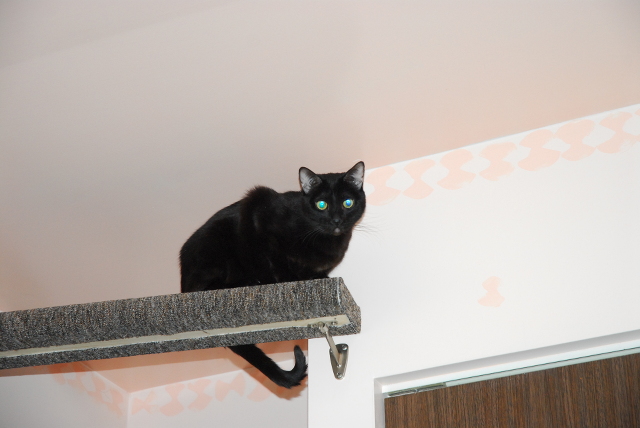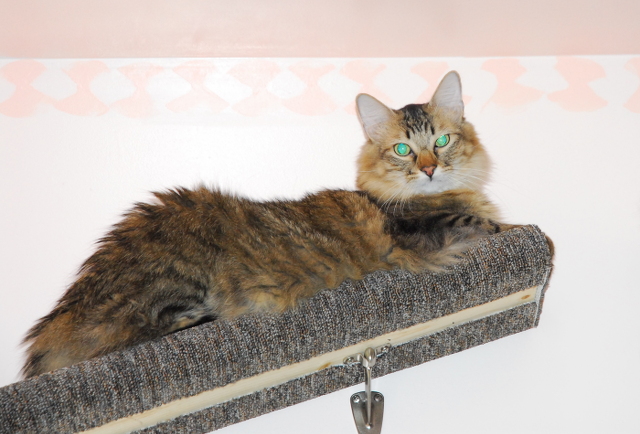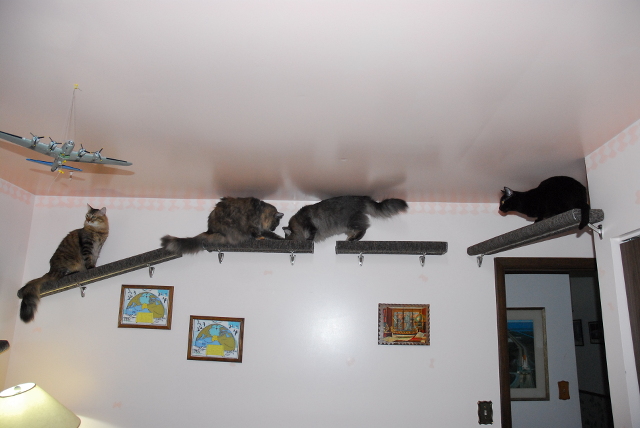Cats need high places; if they didn’t, cat trees wouldn’t be such big business. Cats are climbers, and as such, need vertical territory. This is especially true if they’re indoor-only cats, who need all the enrichment in their environments that they can get. In short, high is good, when it comes to being a cat.
Vertical territory helps to keep the peace in a house, because it gives cats a great way to get away from each other, and from other stressors. According to The Cat Coach, it also allows cats in multi-cat households to arrange themselves in their flexible hierarchy. Your cats can demonstrate their relationships to each other without the need for aggression.

Vertical territory also provides entertainment, says The Cat Coach. Cats might be safest indoors, but they still need physical and mental stimulation. You can provide a lot of this with interactive playtime, but you can’t play with them all the time, and they should have their own places and spaces to explore and claim.

According to Catster, climbing, running and jumping are not just things cats do for fun. The need to be up high is instinctive, and catering to that instinct means happier kitties. Other benefits of having vertical territory in your house are temperature, especially in the winter, because it tends to be warmer up high; and it makes cats feel safe.
How to decide what kinds of vertical territory is right for you
So, other than cat trees, how do you put vertical territory in your house? If you live in a small space, having a cat tree might be difficult, if not impossible. One alternative is to install carpet shelves and ledges. This is a very popular way to add vertical territory to your house, even if it’s small. You can do it yourself, or you can buy some from places like KatWallks.

Another type of vertical territory is a window perch. This has the added benefit of giving your cats a good view of the outside world. They can watch the birds and squirrels, and the leaves when they blow across the yard in autumn. You can buy window perches; or, like shelves, you can build your own.
Our vertical territory consists mostly of shelves. We built our shelves (seen above and below) with 2×6 boards, a roll of carpeting that our local Menards was going to toss, staples, and stair rail brackets. We opted for the stair rail brackets instead of regular shelf brackets for two reasons: One is because they’re smaller and less obtrusive, but the main reason is because it allowed us to put in shelves at an angle without special hardware or mounting pieces.

With the angled shelves, our cats have what amount to ramps in a couple of places. It forces them to use their claws a little bit, and actually climb. We don’t have angled shelves everywhere, but where we do have them, our cats like them.
We’ve found that shelves work in our house better than cat trees. What you do for vertical territory in your house depends on your situation, but it is something that’s very important to keep indoor cats happy.

